Abstract
Responding in multiple periodic and aperiodic schedules of equal mean reinforcement rate was examined during extinction, satiation, and in the presence of various free-food schedules. In Experiments I and II, pigeons were trained on multiple variable-interval–fixed-interval schedules. Decreases in the rate of responding due to extinction, satiation, or food schedules were approximately equal regardless of the temporal pattern of reinforcer presentation. In Experiment III, pigeons responded on a two-component multiple schedule in which each component was a two-member homogeneous response chain terminating in a fixed-interval schedule during one component and in a variable-interval schedule during the other. The length of both terminal links was varied over a series of conditions. Initial-link responding in the fixed-interval component was reduced more by increasing terminal-link length than was initial-link responding in the variable-interval component. However, no differences in resistance to satiation and extinction were obtained across the fixed and variable components. If the relative decrease in responding produced by satiation and extinction is used as an index of the “value” of the conditions maintaining responding, then these data suggest that fixed and variable schedules of equal mean length are equally valued. This conclusion, however, is not consistent with findings of preference for variable over fixed schedules obtained in studies using concurrent-chain procedures.
Keywords: fixed interval, variable interval, random interval, multiple schedules, concurrent-chain schedules, extinction, satiation, key peck, pigeons
Full text
PDF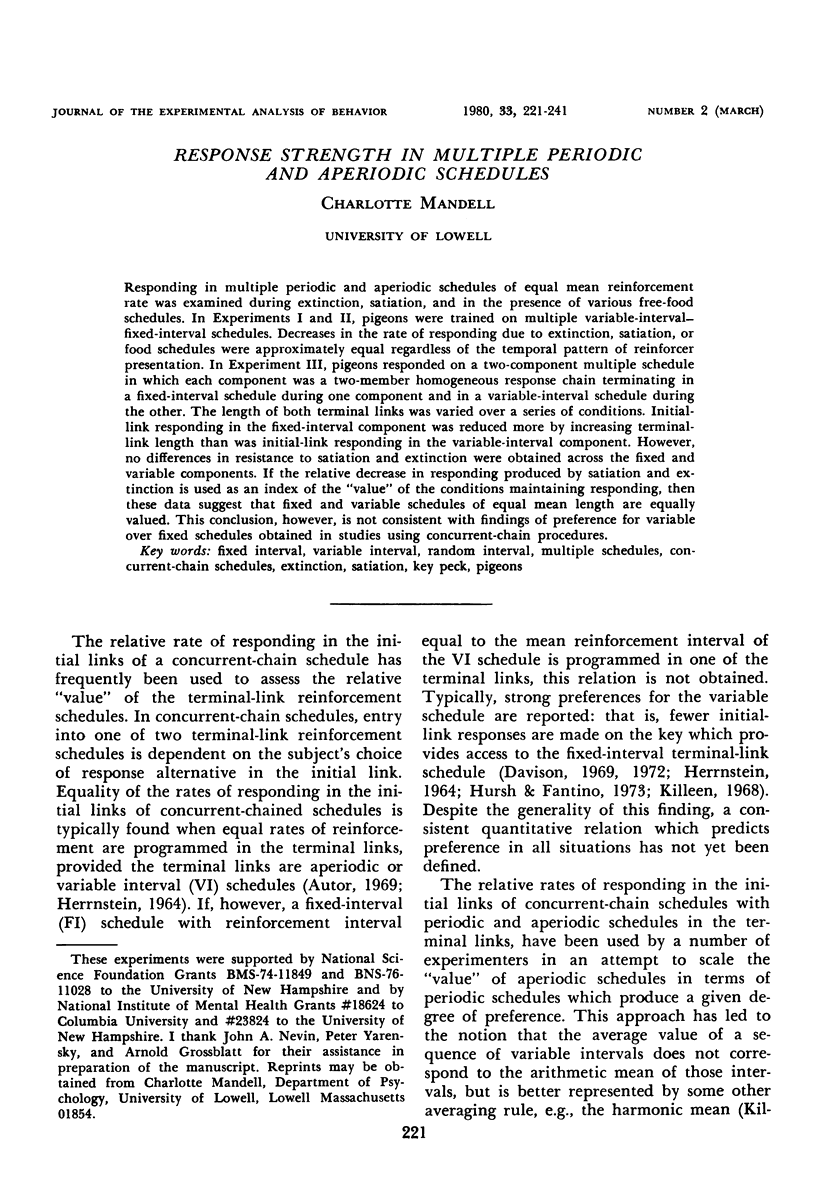
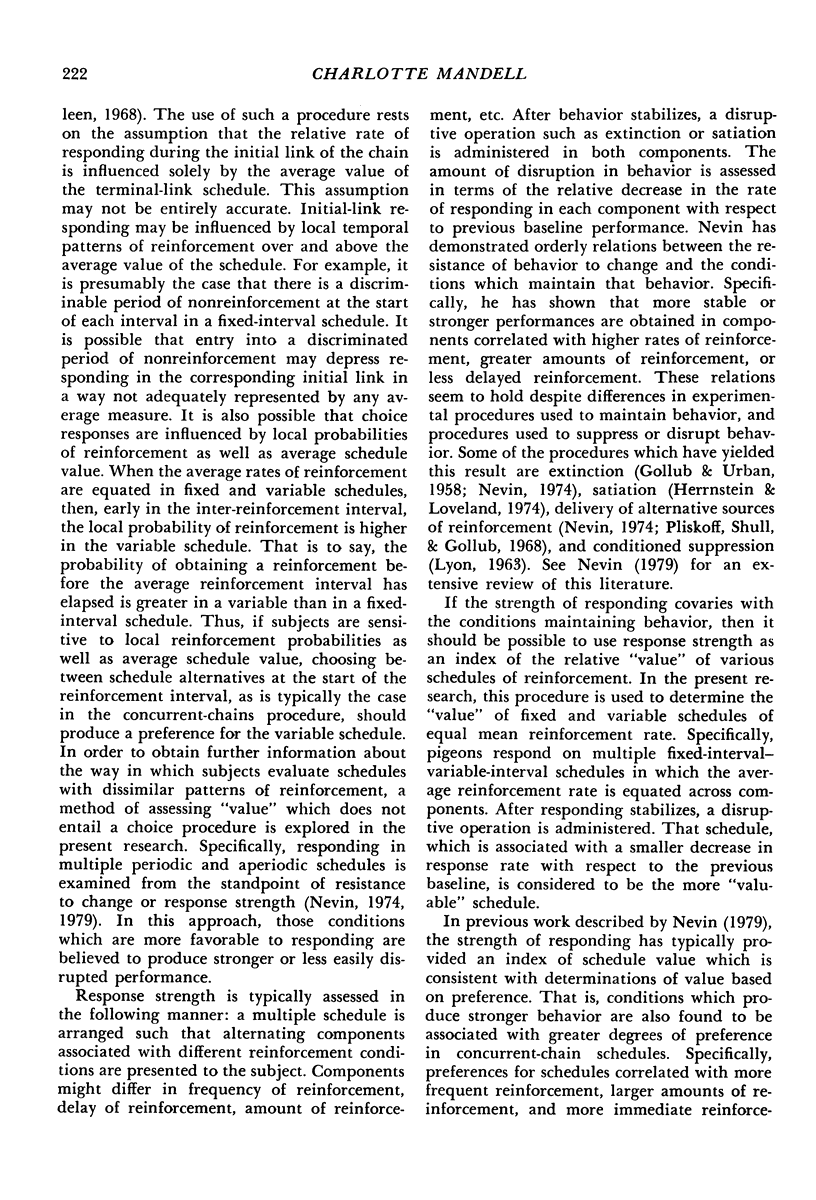
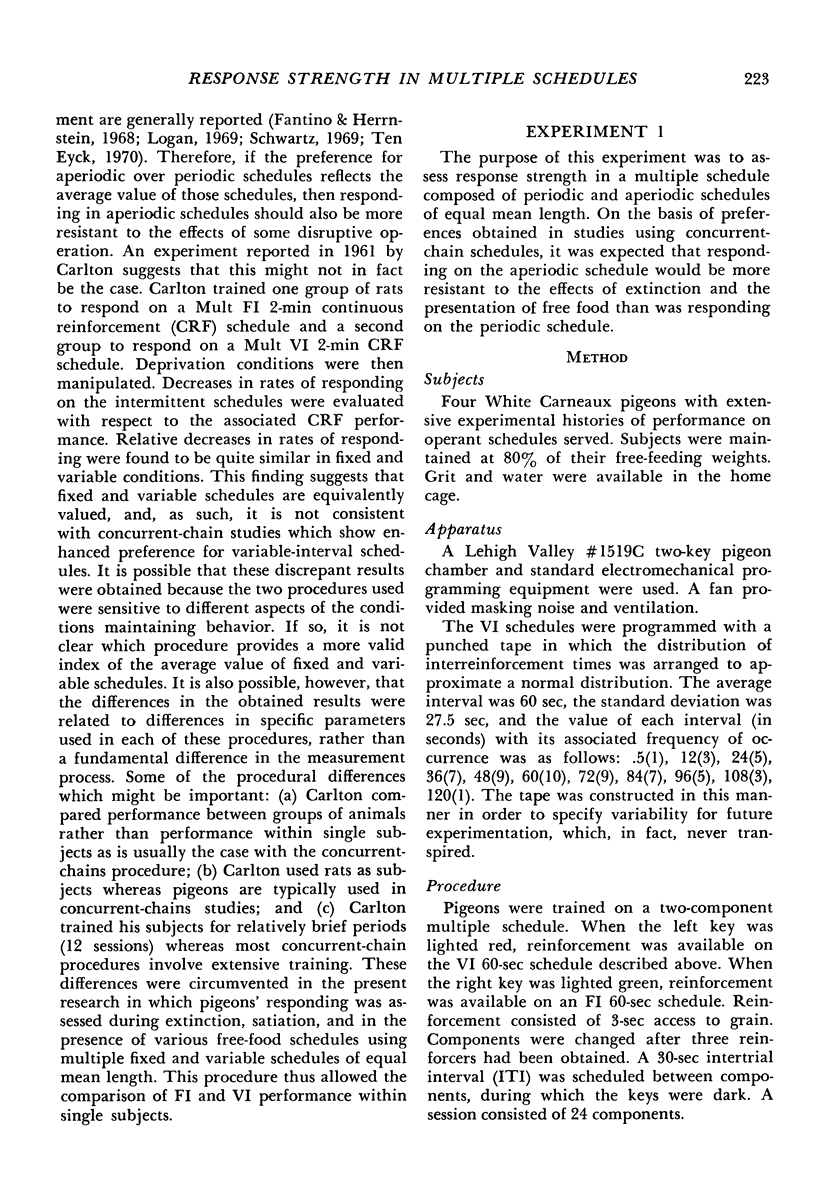
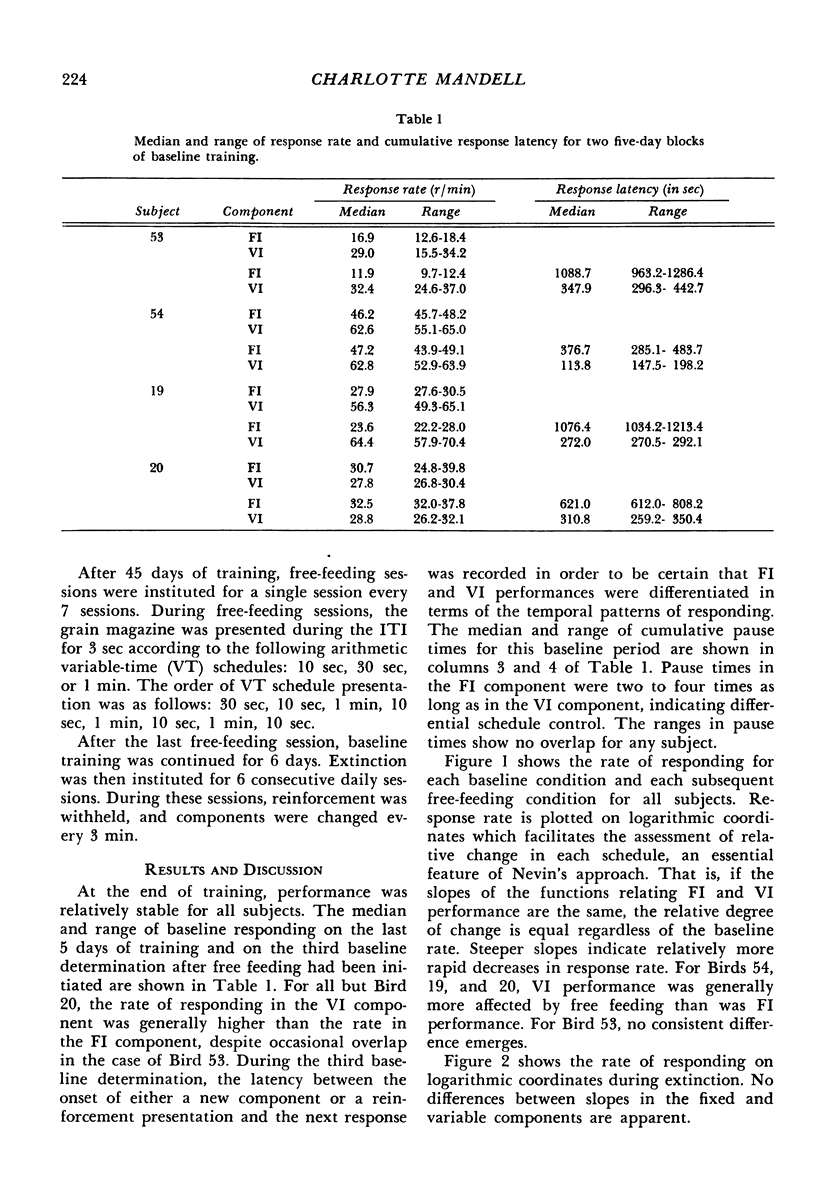
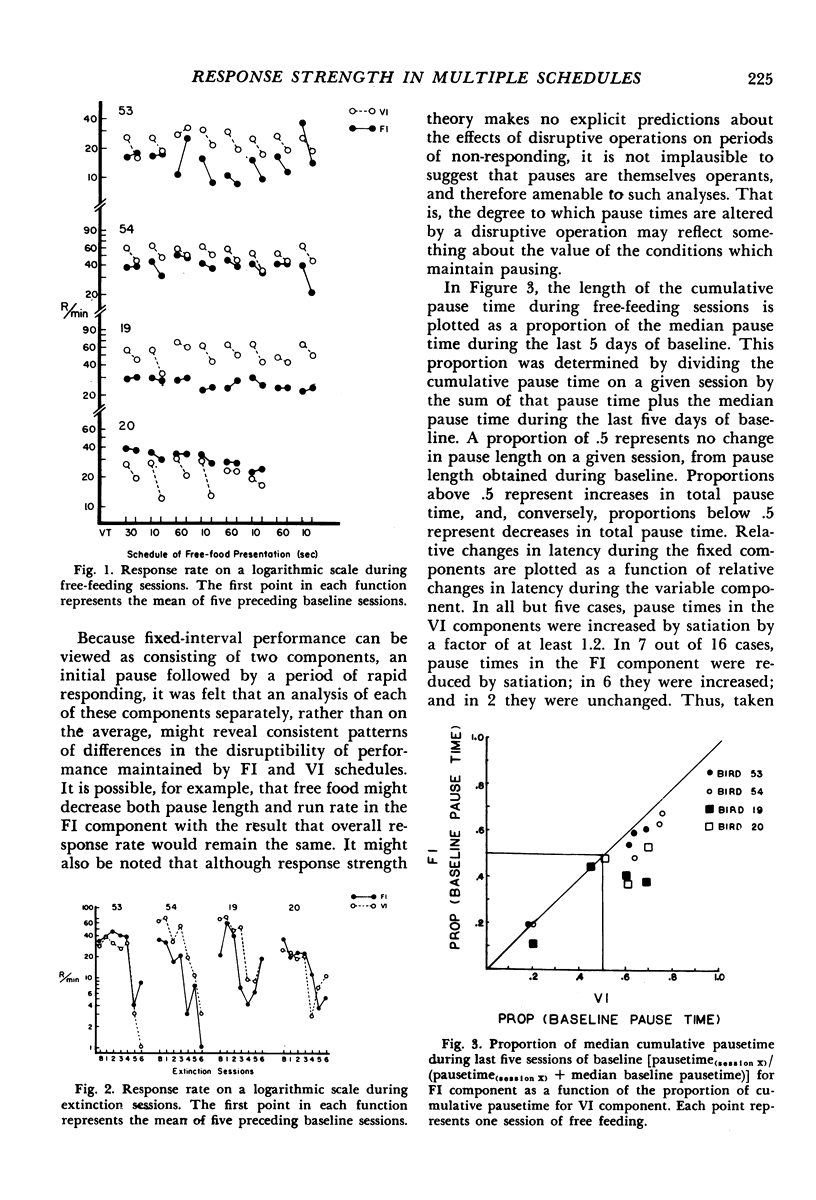
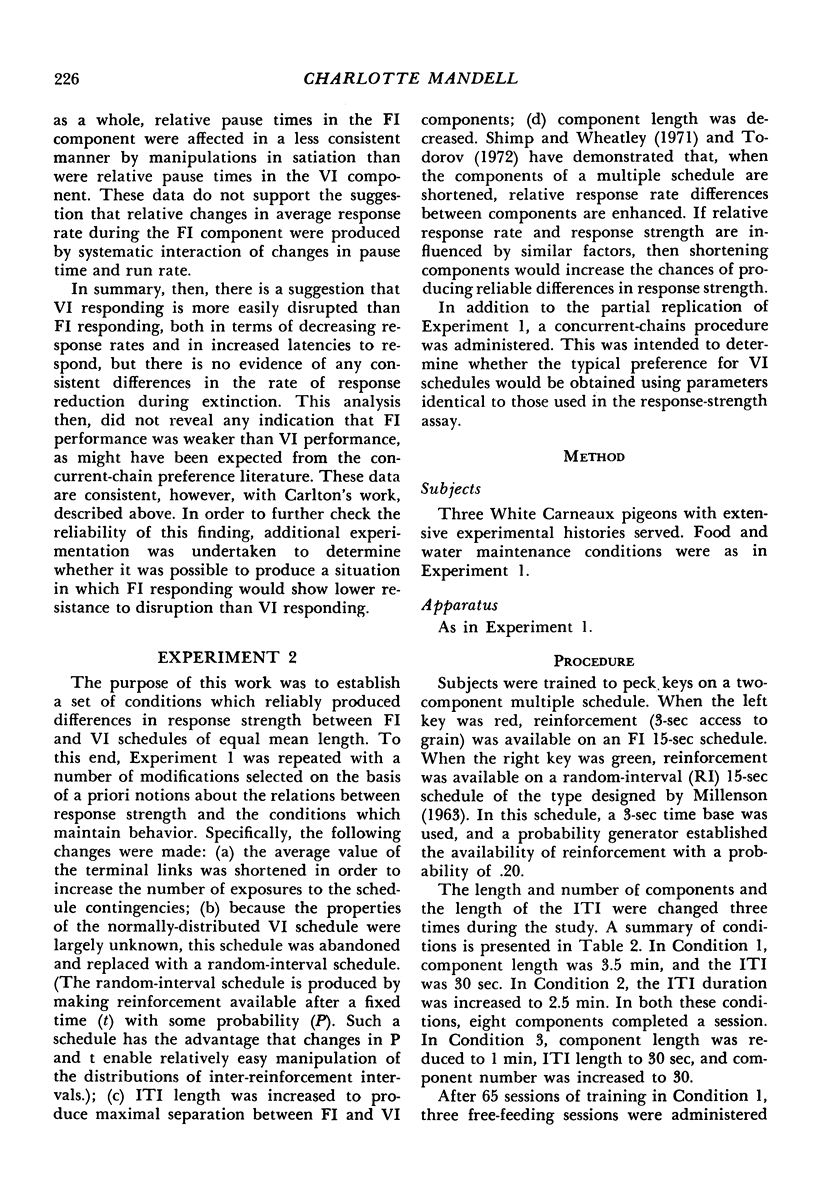
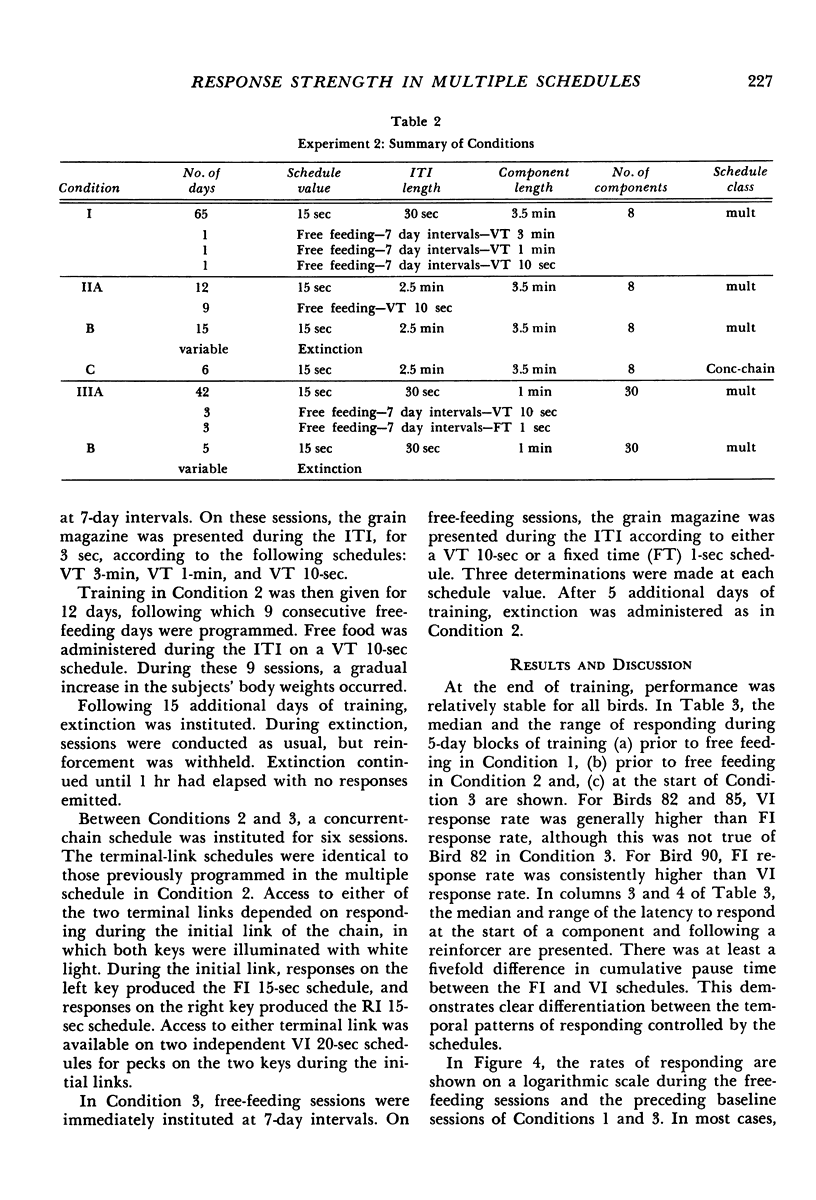
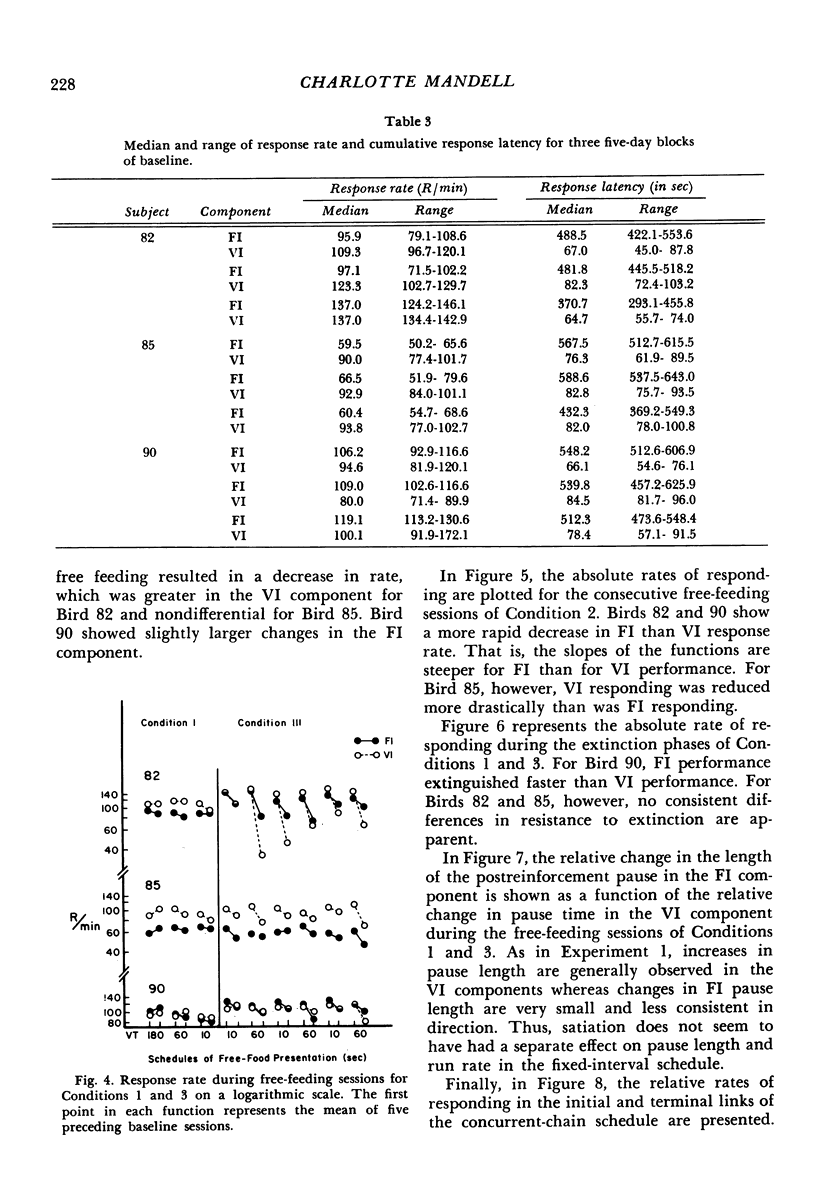
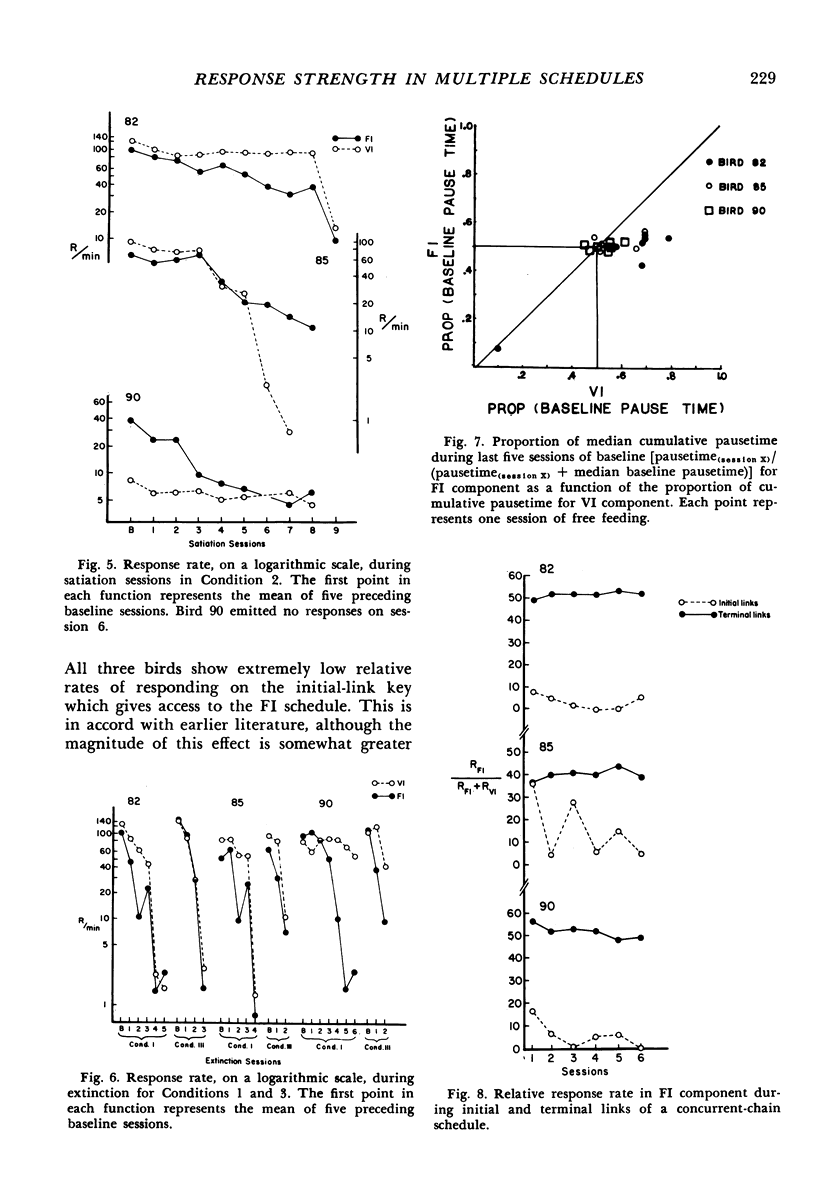
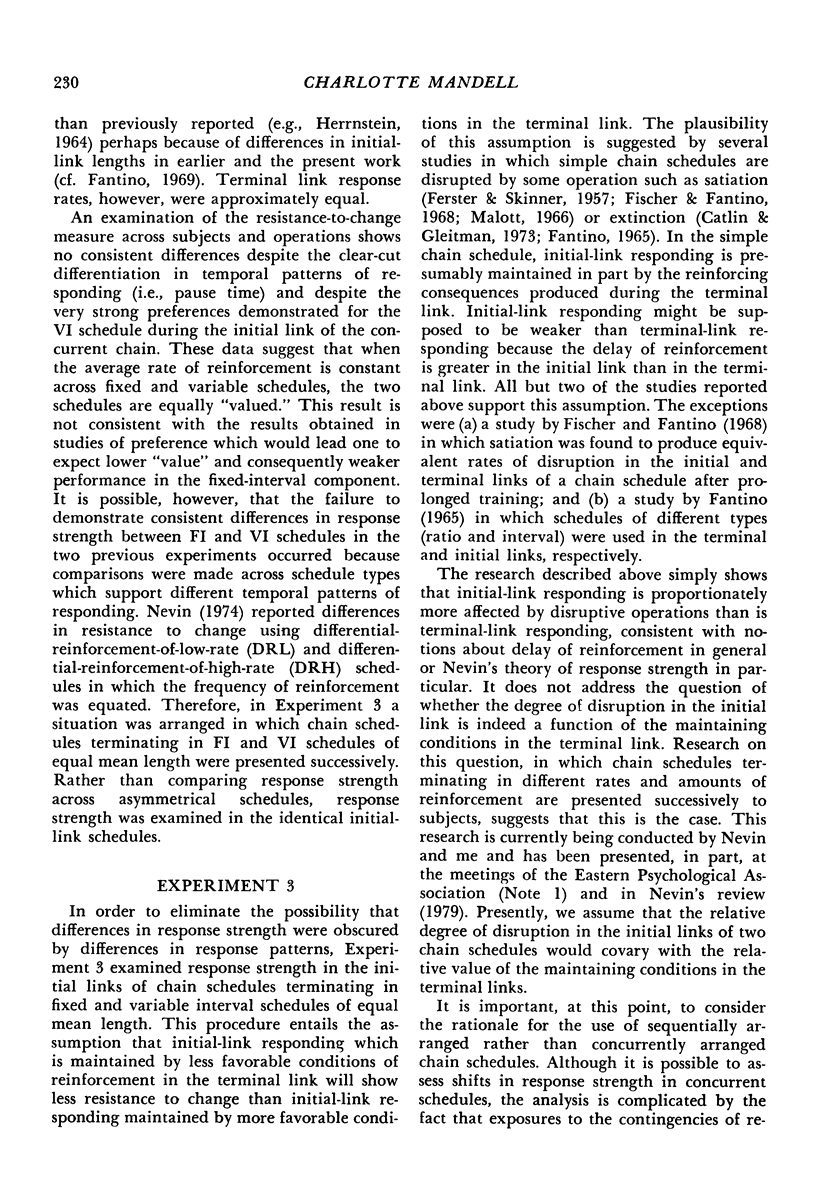
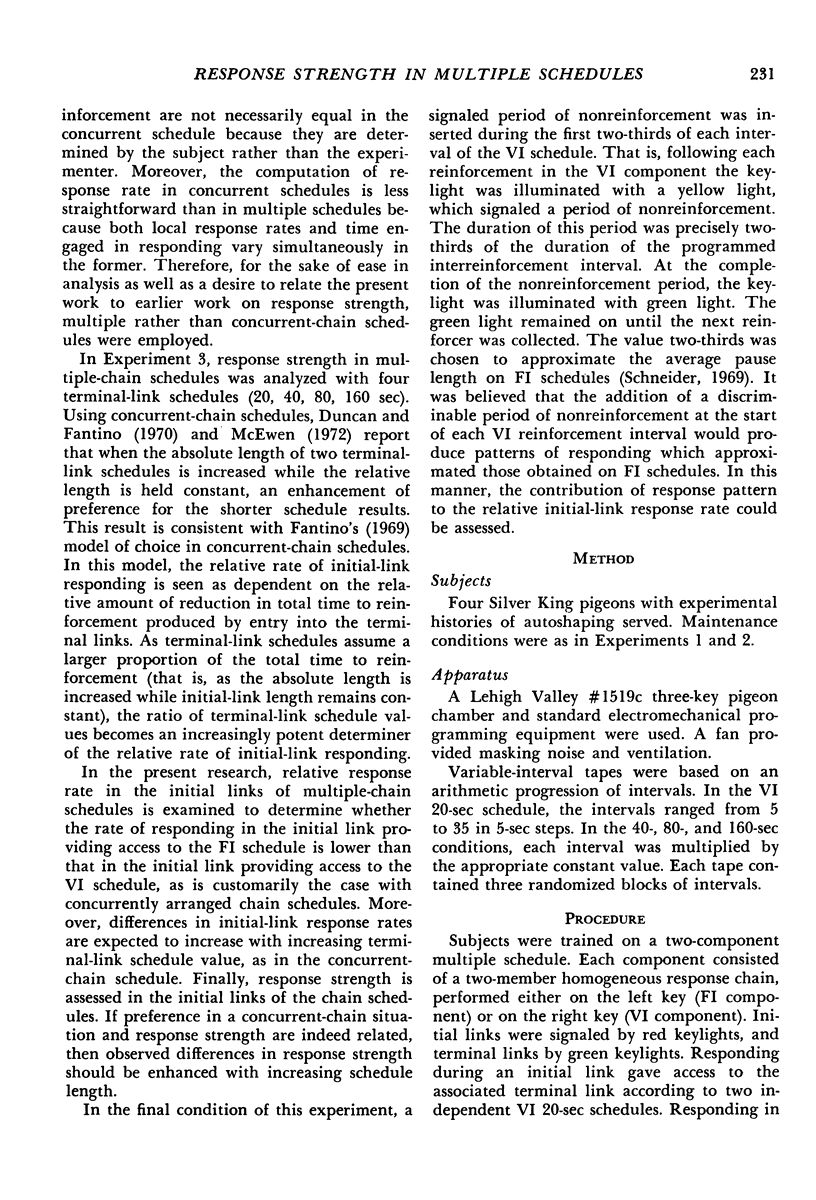
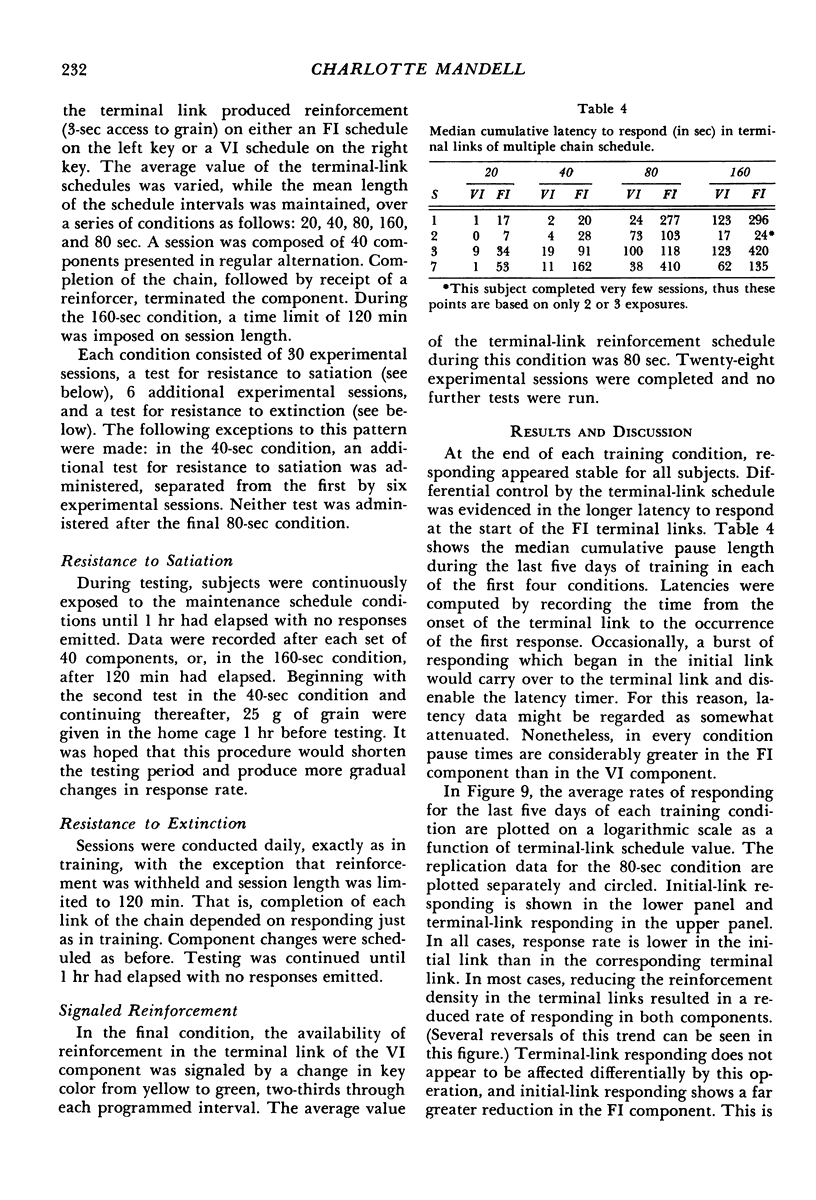
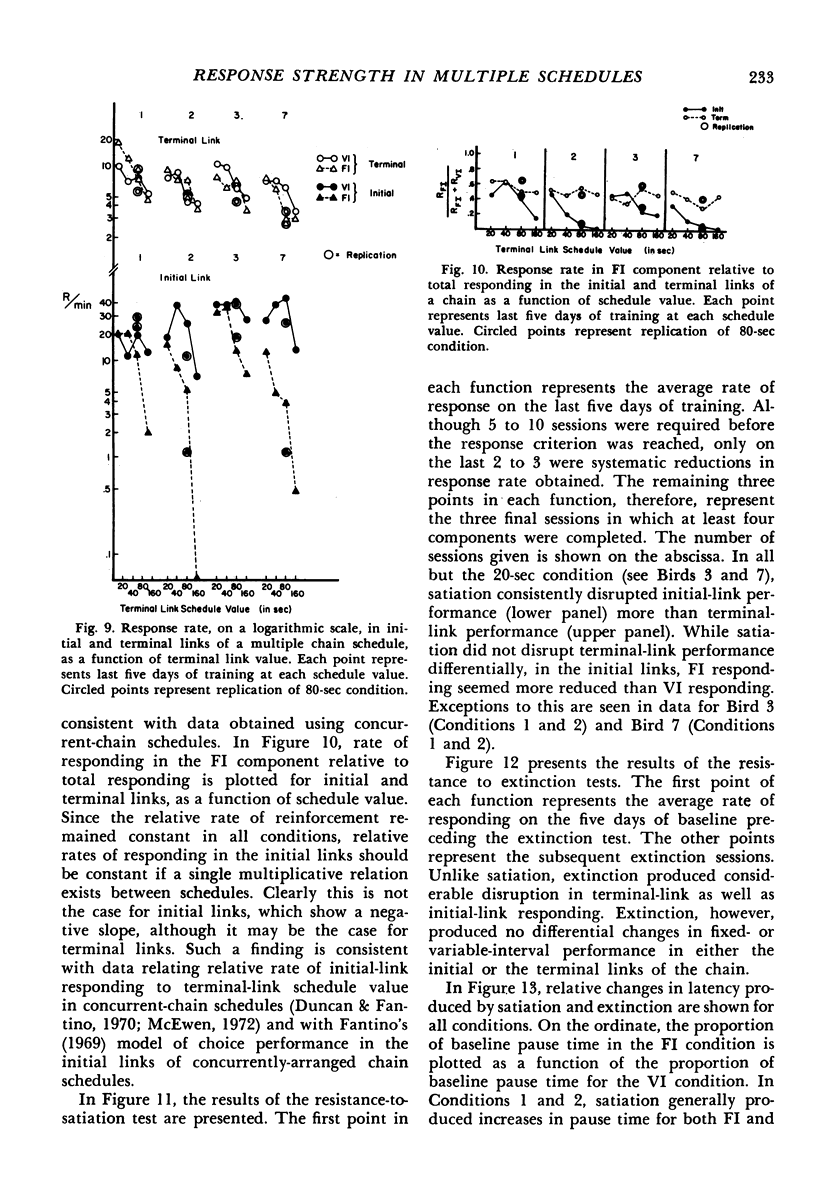
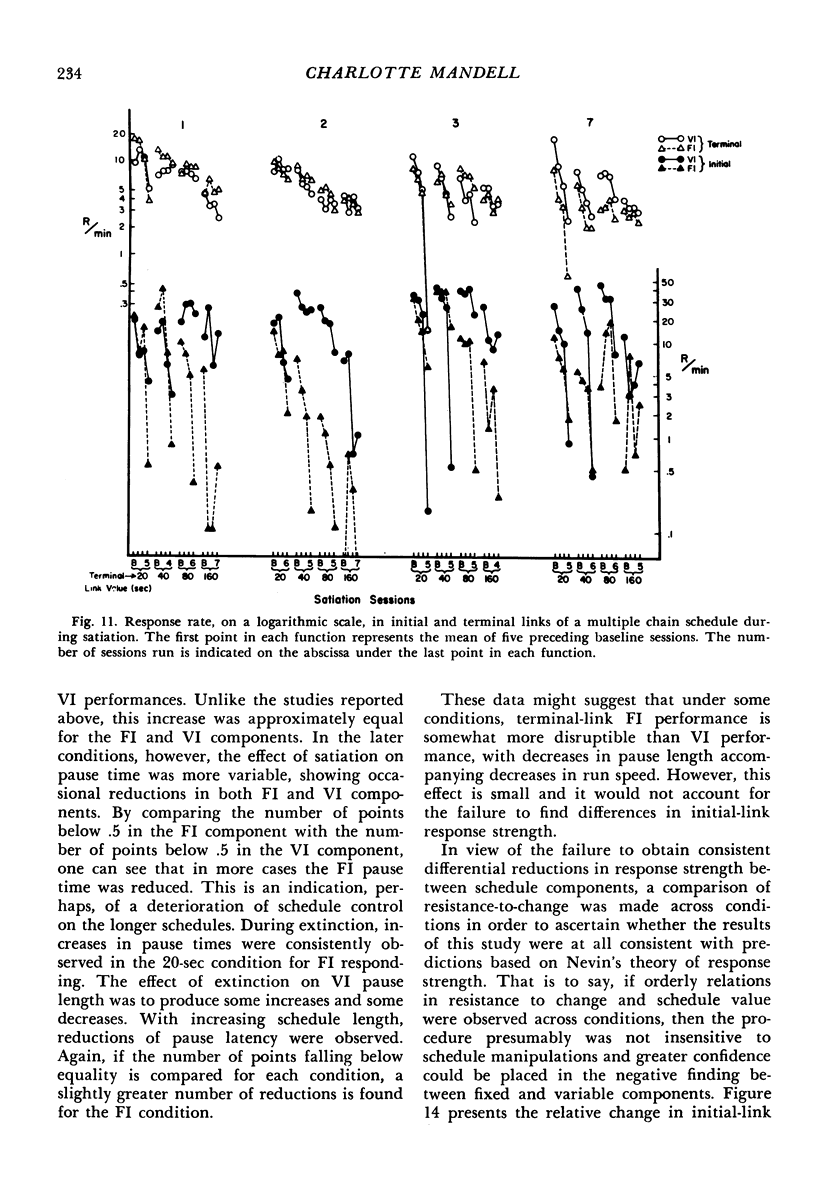
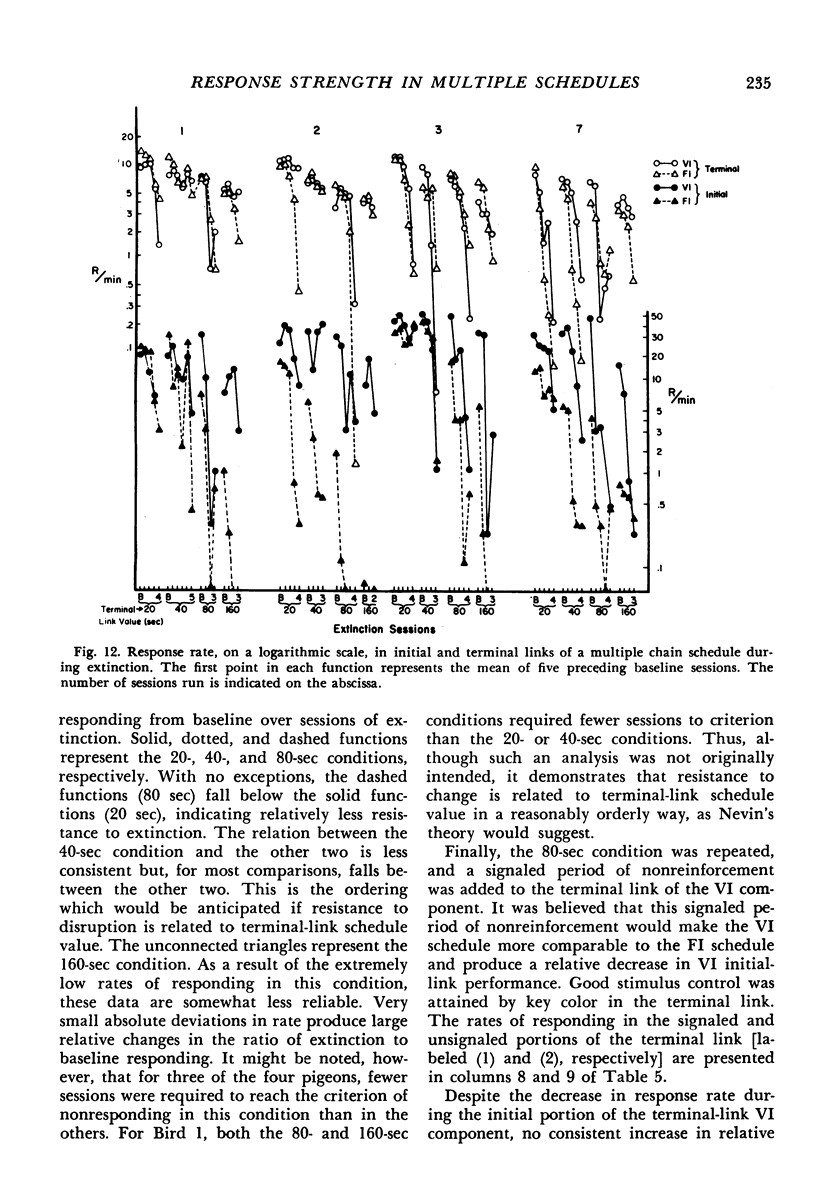
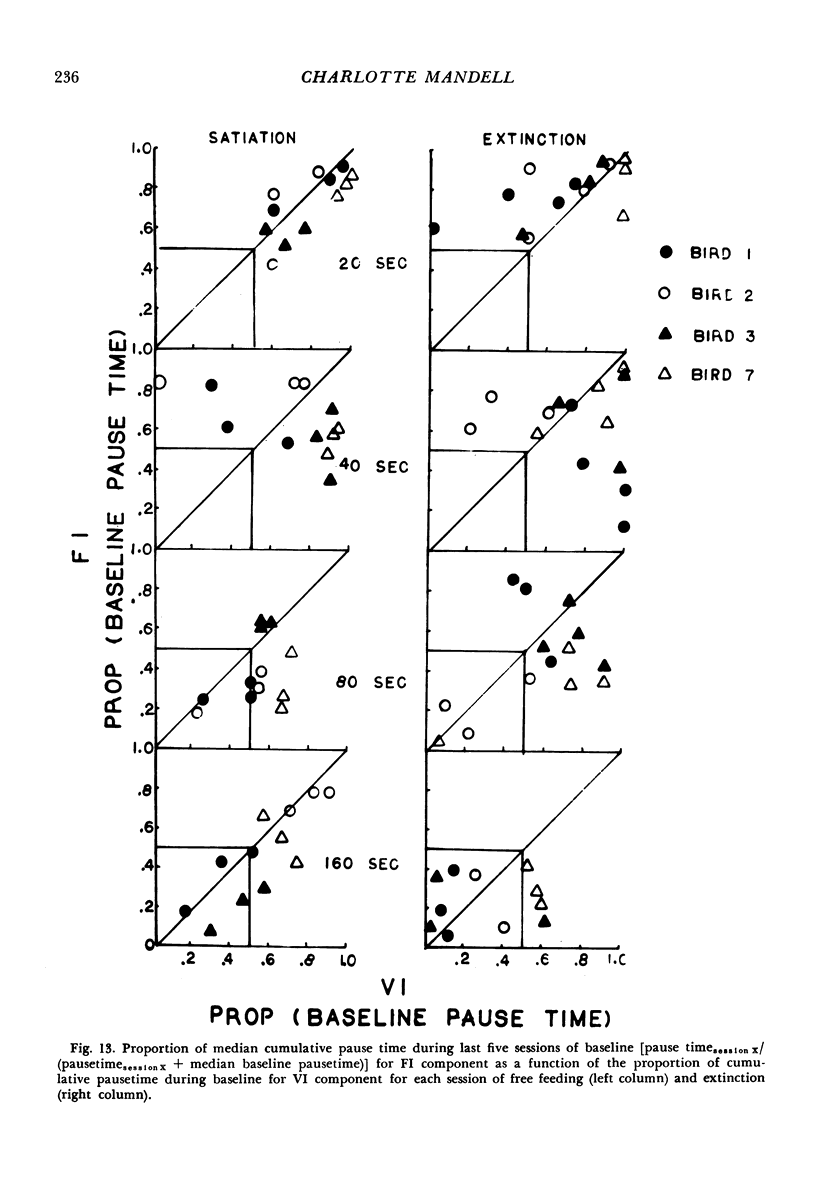
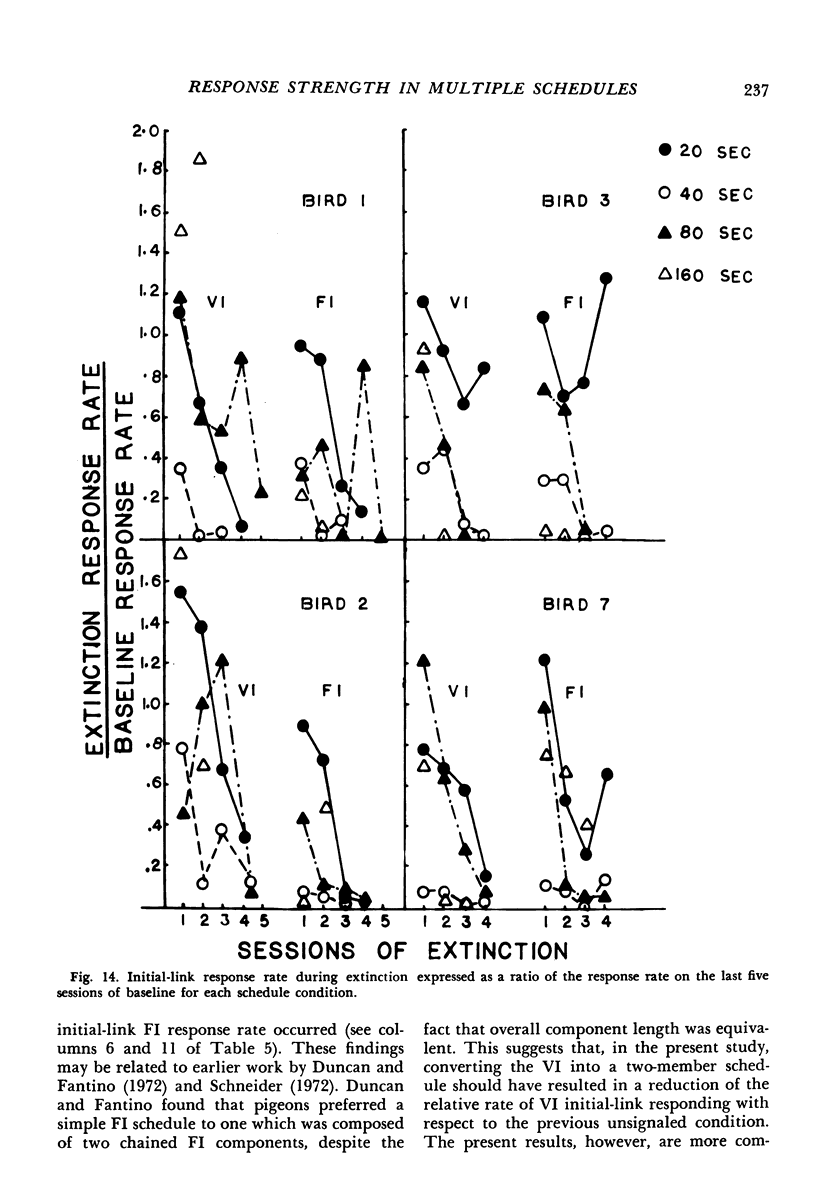
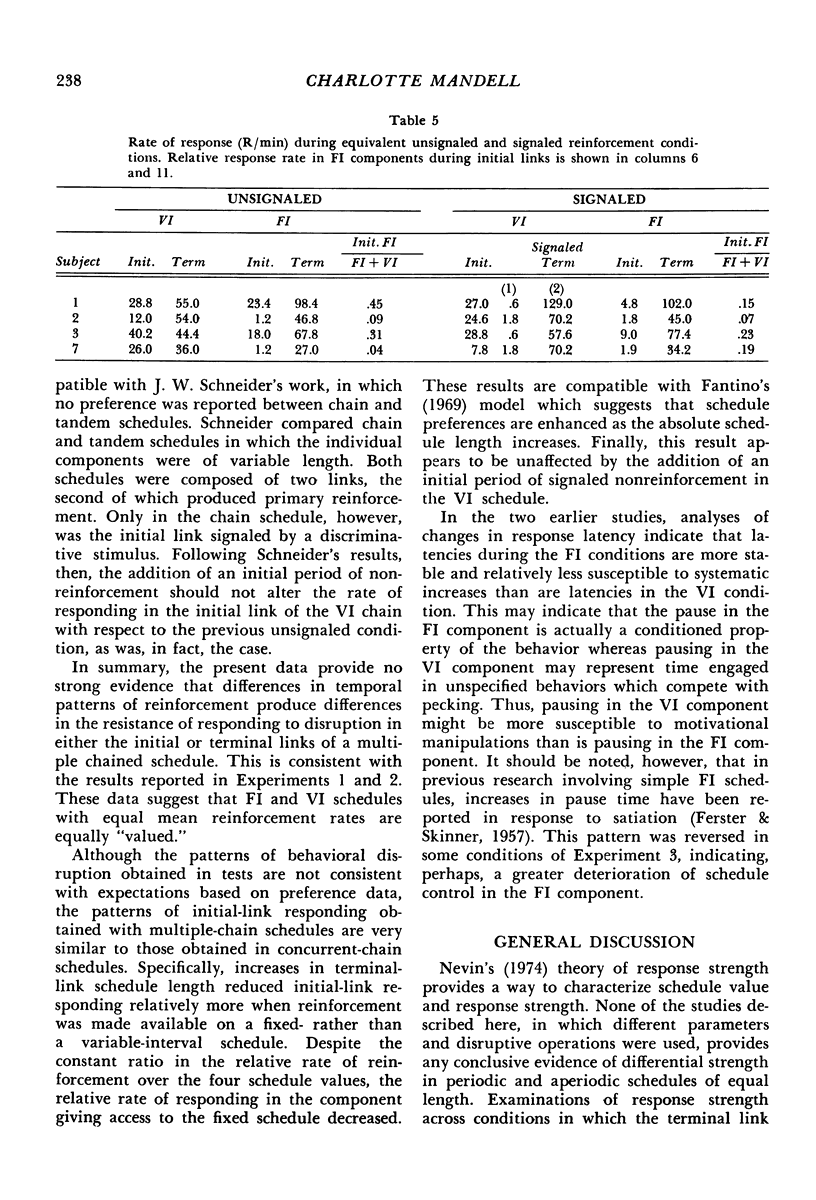

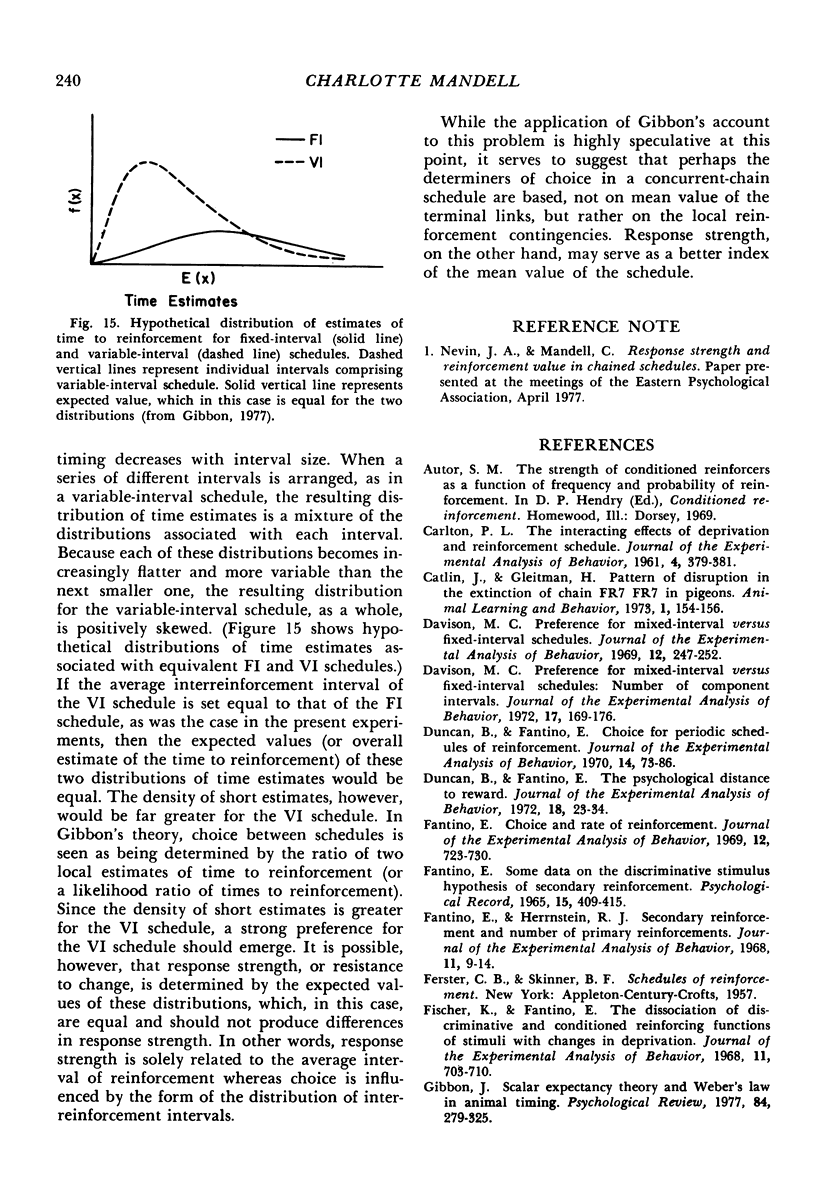
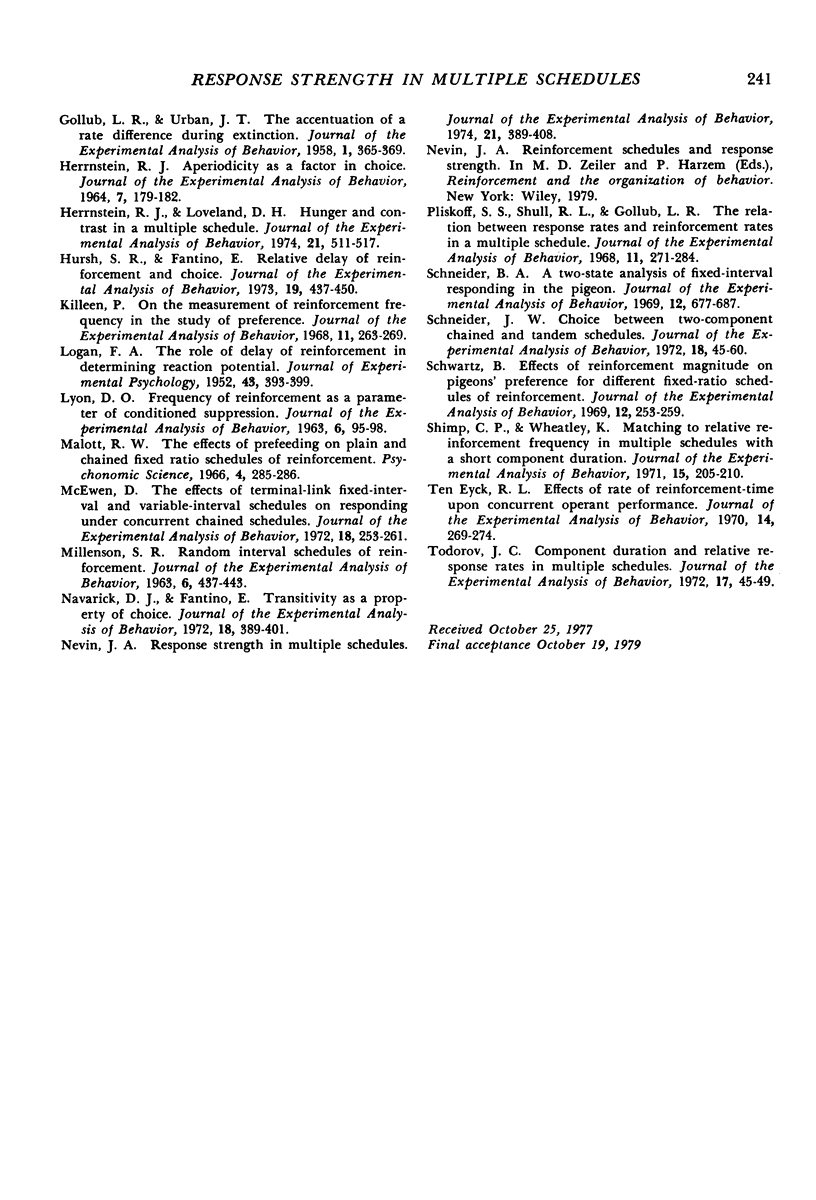
Selected References
These references are in PubMed. This may not be the complete list of references from this article.
- CARLTON P. L. The interacting effects of deprivation and reinforcement schedule. J Exp Anal Behav. 1961 Oct;4:379–381. doi: 10.1901/jeab.1961.4-379. [DOI] [PMC free article] [PubMed] [Google Scholar]
- Davison M. C. Preference for mixed-interval versus fixed-interval schedules. J Exp Anal Behav. 1969 Mar;12(2):247–252. doi: 10.1901/jeab.1969.12-247. [DOI] [PMC free article] [PubMed] [Google Scholar]
- Davison M. C. Preference for mixed-interval versus fixed-interval schedules: number of component intervals. J Exp Anal Behav. 1972 Mar;17(2):169–176. doi: 10.1901/jeab.1972.17-169. [DOI] [PMC free article] [PubMed] [Google Scholar]
- Duncan B., Fantino E. Choice for periodic schedules of reinforcement. J Exp Anal Behav. 1970 Jul;14(1):73–86. doi: 10.1901/jeab.1970.14-73. [DOI] [PMC free article] [PubMed] [Google Scholar]
- Duncan B., Fantino E. The psychological distance to reward. J Exp Anal Behav. 1972 Jul;18(1):23–34. doi: 10.1901/jeab.1972.18-23. [DOI] [PMC free article] [PubMed] [Google Scholar]
- Fantino E. Choice and rate of reinforcement. J Exp Anal Behav. 1969 Sep;12(5):723–730. doi: 10.1901/jeab.1969.12-723. [DOI] [PMC free article] [PubMed] [Google Scholar]
- Fantino E., Herrnstein R. J. Secondary reinforcement and number of primary reinforcements. J Exp Anal Behav. 1968 Jan;11(1):9–14. doi: 10.1901/jeab.1968.11-9. [DOI] [PMC free article] [PubMed] [Google Scholar]
- Fischer K., Fantino E. The dissociation of discriminative and conditioned reinforcing functions of stimuli with changes in deprivation. J Exp Anal Behav. 1968 Nov;11(6):703–710. doi: 10.1901/jeab.1968.11-703. [DOI] [PMC free article] [PubMed] [Google Scholar]
- Gollub L. R., Urban J. T. The accentuation of a rate difference during extinction. J Exp Anal Behav. 1958 Oct;1(4):365–369. doi: 10.1901/jeab.1958.1-365. [DOI] [PMC free article] [PubMed] [Google Scholar]
- HERRNSTEIN R. J. APERIODICITY AS A FACTOR IN CHOICE. J Exp Anal Behav. 1964 Mar;7:179–182. doi: 10.1901/jeab.1964.7-179. [DOI] [PMC free article] [PubMed] [Google Scholar]
- Herrnstein R. J., Loveland D. H. Hunger and contrast in a multiple schedule. J Exp Anal Behav. 1974 May;21(3):511–517. doi: 10.1901/jeab.1974.21-511. [DOI] [PMC free article] [PubMed] [Google Scholar]
- Hursh S. R., Fantino E. Relative delay of reinforcement and choice. J Exp Anal Behav. 1973 May;19(3):437–450. doi: 10.1901/jeab.1973.19-437. [DOI] [PMC free article] [PubMed] [Google Scholar]
- Killeen P. On the measurement of reinforcement frequency in the study of preference. J Exp Anal Behav. 1968 May;11(3):263–269. doi: 10.1901/jeab.1968.11-263. [DOI] [PMC free article] [PubMed] [Google Scholar]
- LOGAN F. A. The role of delay of reinforcement in determining reaction potential. J Exp Psychol. 1952 Jun;43(6):393–399. doi: 10.1037/h0063496. [DOI] [PubMed] [Google Scholar]
- LYON D. O. Frequency of reinforcement as a parameter of conditioned suppression. J Exp Anal Behav. 1963 Jan;6:95–98. doi: 10.1901/jeab.1963.6-95. [DOI] [PMC free article] [PubMed] [Google Scholar]
- Macewen D. The effects of terminal-link fixed-interval and variable-interval schedules on responding under concurrent chained schedules. J Exp Anal Behav. 1972 Sep;18(2):253–261. doi: 10.1901/jeab.1972.18-253. [DOI] [PMC free article] [PubMed] [Google Scholar]
- Millenson J. R. Random interval schedules of reinforcement. J Exp Anal Behav. 1963 Jul;6(3):437–443. doi: 10.1901/jeab.1963.6-437. [DOI] [PMC free article] [PubMed] [Google Scholar]
- Navarick D. J., Fantino E. Transitivity as a property of choice. J Exp Anal Behav. 1972 Nov;18(3):389–401. doi: 10.1901/jeab.1972.18-389. [DOI] [PMC free article] [PubMed] [Google Scholar]
- Nevin J. A. Response strength in multiple schedules. J Exp Anal Behav. 1974 May;21(3):389–408. doi: 10.1901/jeab.1974.21-389. [DOI] [PMC free article] [PubMed] [Google Scholar]
- Pliskoff S. S., Shull R. L., Gollub L. R. The relation between response rates and reinforcement rates in a multiple schedule. J Exp Anal Behav. 1968 May;11(3):271–284. doi: 10.1901/jeab.1968.11-271. [DOI] [PMC free article] [PubMed] [Google Scholar]
- Schneider B. A. A two-state analysis of fixed-interval responding in the pigeon. J Exp Anal Behav. 1969 Sep;12(5):677–687. doi: 10.1901/jeab.1969.12-677. [DOI] [PMC free article] [PubMed] [Google Scholar]
- Schneider J. W. Choice between two-component chained and tandem schedules. J Exp Anal Behav. 1972 Jul;18(1):45–60. doi: 10.1901/jeab.1972.18-45. [DOI] [PMC free article] [PubMed] [Google Scholar]
- Schwartz B. Effects of reinforcement magnitude on pigeons' preference for different fixed-ratio schedules of reinforcement. J Exp Anal Behav. 1969 Mar;12(2):253–259. doi: 10.1901/jeab.1969.12-253. [DOI] [PMC free article] [PubMed] [Google Scholar]
- Shimp C. P., Wheatley K. L. Matching to relative reinforcement frequency in multiple schedules with a short component duration. J Exp Anal Behav. 1971 Mar;15(2):205–210. doi: 10.1901/jeab.1971.15-205. [DOI] [PMC free article] [PubMed] [Google Scholar]
- Ten Eyck R. L. Effects of rate of reinforcement-time upon concurrent operant performance. J Exp Anal Behav. 1970 Nov;14(3):269–274. doi: 10.1901/jeab.1970.14-269. [DOI] [PMC free article] [PubMed] [Google Scholar]
- Todorov J. C. Component duration and relative response rates in multiple schedules. J Exp Anal Behav. 1972 Jan;17(1):45–49. doi: 10.1901/jeab.1972.17-45. [DOI] [PMC free article] [PubMed] [Google Scholar]


